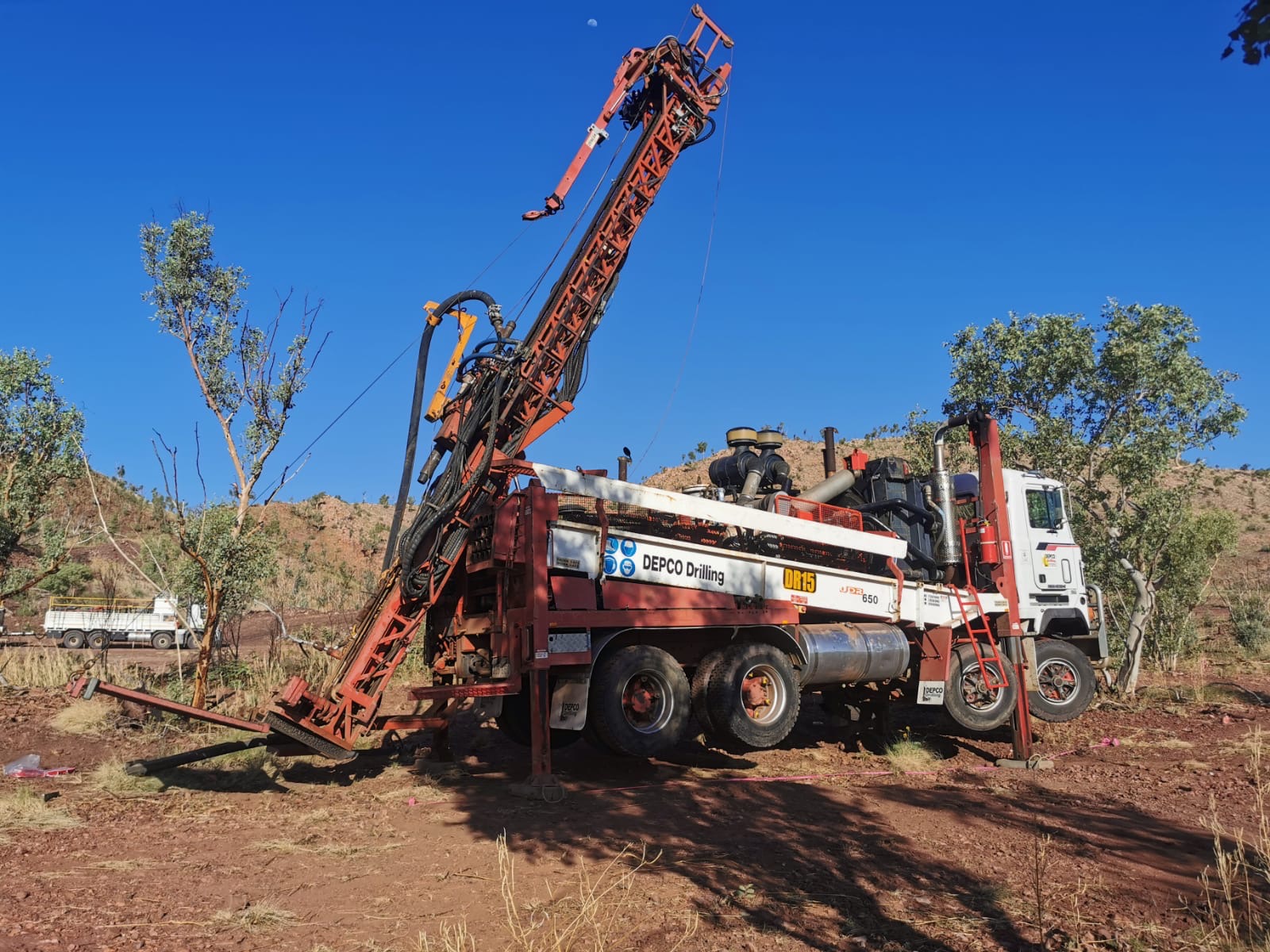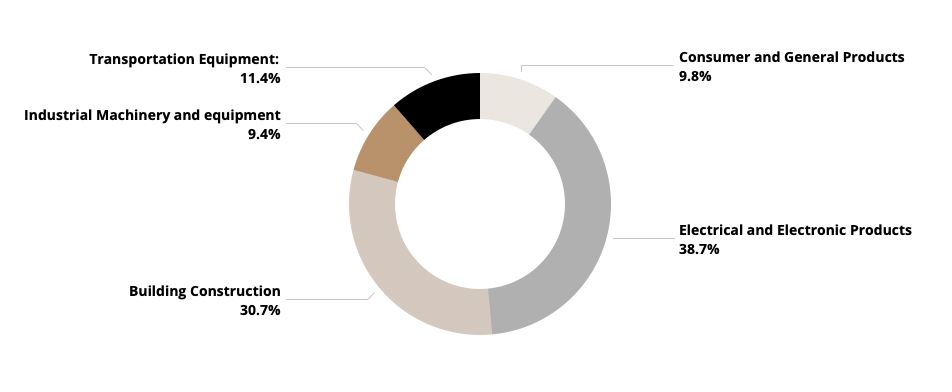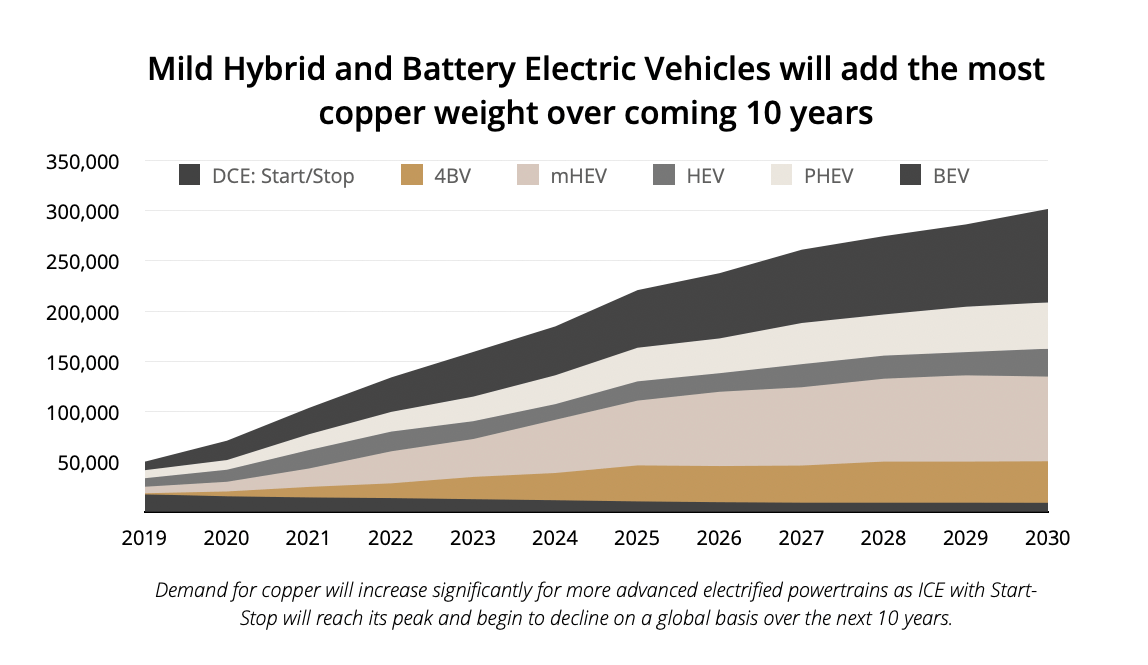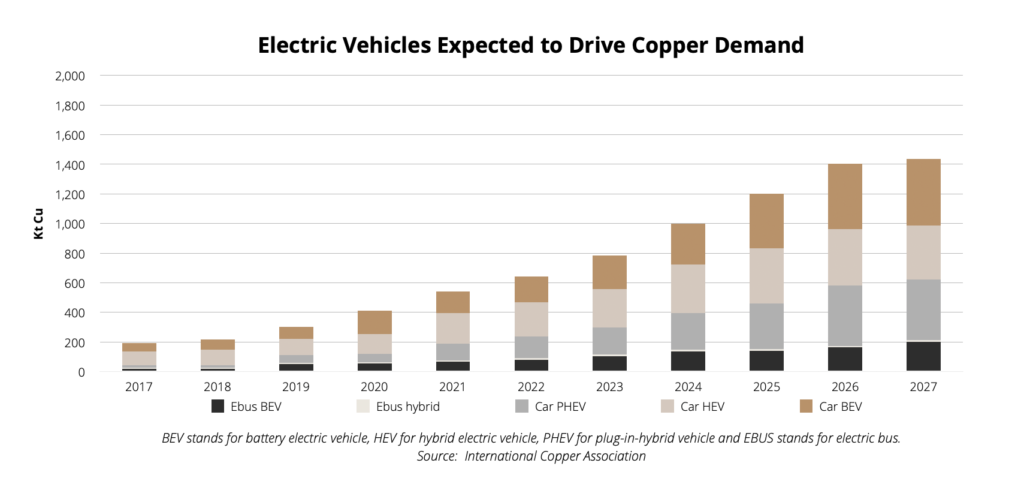Building a sustainable future
Copper is the metal of today and tomorrow. It underpins our day-to-day lives, from the phones in our pockets to the homes where we live.
Electric Vehicles
Copper underpins the EV revolution. As the most efficient and affordable electrical conductor, it is the perfect material for electric car infrastructure and charging stations. Whilst conventional vehicles contain some copper, hybrid electric and other battery powered cars require three times more than internal combustion engine vehicles. Increased environmental legislation around the world, combined with ambitious targets set by car producers and consumers alike, is seeing demand for copper soar.
Renewable Energy
The world needs more sources of renewable energy. Government targets and decarbonisation objectives set by the Paris Agreement are increasing our dependence on power grids built around more sustainable, circular materials like copper. The metal’s conductivity, high energy output and recyclability place it at the heart of global electrification - particularly the growth in new solar and wind projects, which require four to six times as much copper as conventional energy sources.
Urbanisation
Copper is helping to build the cities of tomorrow. Global population growth requires new infrastructure, particularly in rapidly developing nations. Copper is not only a vital tool for construction, it is also a prime material for electrical wiring and other high-speed telecommunication devices. As we move towards an increasingly digital economy, interconnection is essential. Copper makes it possible to build and connect greener and smarter cities.
But supply is not keeping up with demand
- Existing deposits are being depleted faster than new mines can come onstream
- Lower grades are being mined at increasingly expensive costs and diminishing returns
- The industry is suffering from a chronic lack of exploration investment over the last decade
There is a fundamental imbalance between supply and demand, leading to a squeeze on global copper inventories. Fitch Solutions forecast the market deficit will continue to widen this decade, with a copper shortfall of 489,000 tonnes in 2024, rising to 510,000 tonnes in 2027.
It is only by discovering and developing the next generation of copper mines that the industry can meet the demand of today, let alone the future.
The story of copper
Copper is one of the most commonly used resources in our day-to-day lives, but knowledge of its special properties is far from new. In fact, copper was the first metal utilised by humans. Copper can be very simply alloyed, and this ease of manufacture – paired with its natural resistance to corrosion-made brass, its standard alloy – made it a popular choice for constructing early instruments like clocks and navigation equipment, as well as coins and decorative items.
Time moves on, and sectors that traditionally depended on fossil fuels have become increasingly electrified. As a result, copper became a staple in the construction of modern electronic appliances like refrigerators, heating and cooling systems, and motors. Copper is commonly used in combination with other metals like zinc, nickel, and tin, and this abundance of alloys adds to its versatility of application.
Valued for its malleability and high thermal and electrical conductivity, it’s no surprise that copper is an essential part of our industries today. According to the latest U.S. Geological Survey (USGS), it is the third most consumed metal in the world, with approximately three-quarters of that going into the electrical wiring, telecommunication cables and other electronics that we rely on on a daily basis.
Copper is the third most consumed metal in the world
However, copper has a number of wider uses. In the medical sector, copper’s capacity to kill germs was noted as far back as the Egyptian era. MRSA bacteria, for example, cannot survive on copper like it can on platinum metal surfaces. The installation of copper surfaces in hospitals, gyms, and educational settings is an effective way to mitigate the spread of bacterial infections.
The average family home has approximately 300 lbs of copper
It can also be found almost anywhere around the house – the average family home has approximately 300 lbs of copper in wiring, plumbing, and built into modern appliances. Because of its antimicrobial properties, copper is ideal for ‘high-touch’ items such as bed-frame and door knobs. It is also the superior metal for plumbing systems because it is impermeable and can withstand weathering and temperature changes without sagging or cracking.
Copper Demand by Source
Powering up the future
Demand for copper is on the rise. The Copper Alliance reports that it is expected to jump by 50 percent in the next 20 years, with growth in demand compounded by the drive towards more sustainable and efficient sources of energy – objectives which can be supported through the use of copper. Growing populations and urbanisation require investment in infrastructure, for which copper is essential.
Two thirds of copper produced in the past 30 years is still in use today, while an additional 8.5 million tons are recycled annually. Significantly, copper is a ‘circular’ material, meaning it maintains its quality, even after it has been repurposed. With environmental considerations continuing to move up the global agenda, copper’s sustainable properties make it a vital commodity.
In the wake of the Covid-19 pandemic, energy-transition related copper demand is predicted to accelerate as we move towards a green recovery and a more sustainable economy. Solar and wind technologies require around four to six times as much copper as conventional electricity sources, meaning copper exploration and extraction will be crucial in achieving a low carbon future and finding clean and efficient solutions to the challenges of tomorrow.
Electric Vehicles use up to three times as much copper as a regular internal combustion engine passenger car. By 2030 it is anticipated that over 20 million EV charging points will be rolled out globally. That equates to 250% more copper being consumed than in 2019.
All data points to copper being inseparable from our green future.




